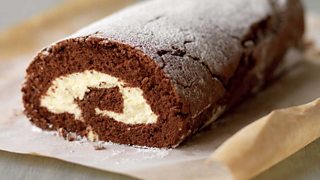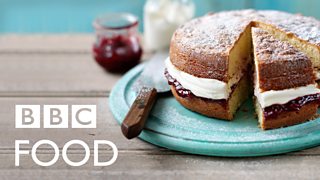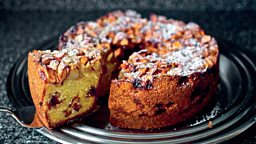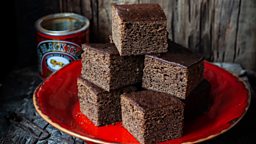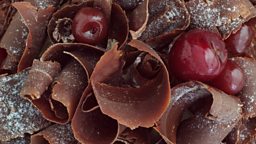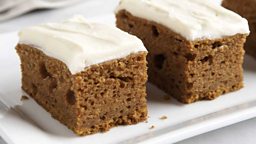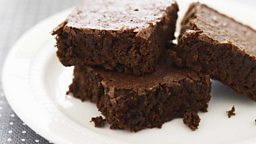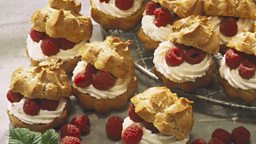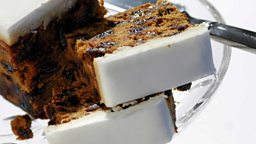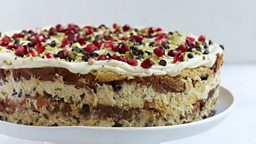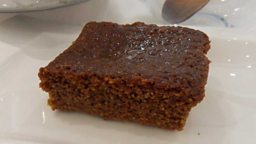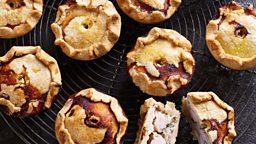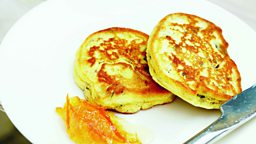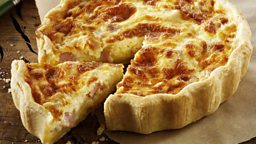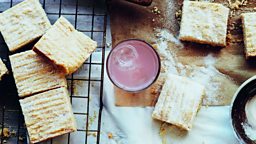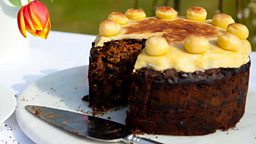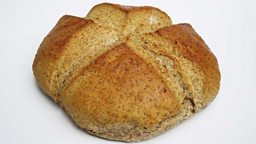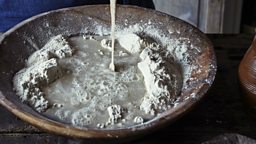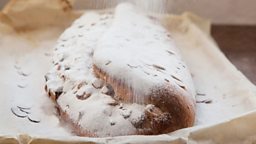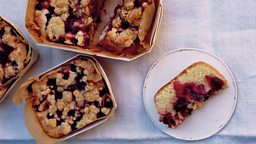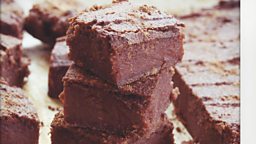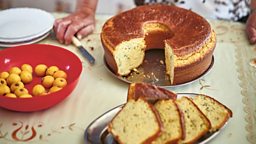Cinnamon Buns
Norwegian cook and food anthropologist Signe Johansen shares her recipe for cinnamon buns, a Scandinavian classic.
Cinnamon Buns
Cinnamon buns are quintessentially Scandinavian, and you will find subtle variations on this tasty treat across Norway, Sweden, Denmark and Finland. This cinnamon bun-cake looks very festive and inviting - it is perfect to share at brunch or afternoon tea.
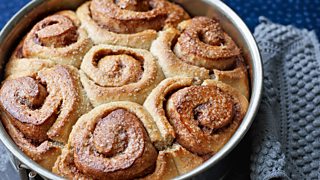
to be kept up to date with all cookery items.
Tips and Techniques
- Spelt is more digestible than wheat and results in a softer bun texture. It is also good for people with a wheat intolerance, and for diabetics. It is available in most large supermarkets, but if you can’t get hold of it you can use wheat flour instead.
- You can store fresh yeast in the fridge for up to 2 weeks. You can also freeze it, but you then need to double the quantity.
- You will probably be able to smell when fresh yeast goes off. But to check whether it’s still active you can add a pinch of sugar to a little yeast and it should bubble and froth.
- Cardamom is essential for this recipe – it has a heady pungent flavour and it improves the dough.
- To make vanilla salt you blitz a vanilla pod with some sea salt, and store it in a jar. It is also available to buy.
- To scald milk, bring it just to the boil and then remove from the heat and allow it to cool. Hot milk will kill the yeast.
- Lightly oil the work surface before rolling out the dough to prevent it sticking. If you use flour this changes the consistency of the dough.
- The rolled out dough should be around the size of a laptop.
- If you’re cooking individual buns rather than a bun cake, allow 10-12 mins at 200 C. To give the buns a boost, you can add some water to the oven which will create steam and help them rise.
Ingredients
For the dough
- 225ml whole milk
- 75g butter
- 300g refined spelt (or plain) flour
- 125g wholemeal spelt (or wheat) flour
- 70g caster sugar
- 1 tsp ground cardamom
- 1/2 tsp fine sea salt
- 20g fresh yeast or 10g fast action dried yeast
- 1 medium egg, beaten
For the filling
- 75g butter, softened
- 50g caster sugar
- 2 tsp cinnamon
- 1/2 tsp vanilla salt
To finish
- 1 medium egg, beaten
- demerara or natural sugar crystals
Preparation and Method
Scald the milk by heating it in a small pan with the butter until it is almost boiling and then allow it to cool while you assemble the other ingredients. Scalding the milk makes the finished buns softer
Sift all the dry ingredients together in to a large bowl, sprinkle the dried yeast in and stir through. If using fresh yeast, cream it with a teaspoon of sugar in a small bowl and once it is liquid (after about 30 seconds), add to the dry ingredients
Make a well in the middle of the dry ingredients, add the beaten egg and then the milk-butter mixture, which should be warm rather than hot to the touch, as otherwise you risk killing the yeast. Stir everything together until the mixture comes off the sides of the bowl and looks - for want of a better word - doughy (it'll be a soft and slightly wet dough). Place the dough in a lightly oiled plastic bag or cover the bowl with lightly oiled clingfilm, and leave it to rise in a warm place for 30 minutes
Make the filling by creaming the butter, sugar, cinnamon and vanilla salt together in a medium-sized bowl. Butter a 23cm diameter round cake tin with sides at least 5cm high
Use a rolling pin to roll out the dough on a lightly floured surface until it forms a rectangle of about 35cm x 25cm. Spread the filling evenly over the dough, starting from the middle and working outwards. If the buttery mix is a little cold, you can use your hands to spread it, as the heat helps to smooth the butter out (and it's immensely satisfying getting your hands all sticky). Then roll the dough in to a wide cylinder, rolling from one of the longer edges of the rectangle, so it looks like an uncooked swiss roll
Using a sharp non-serrated knife, cut the cylinder in to seven slices, with one slice slightly smaller than the rest. Place the smallest slice in the middle of the cake tin and then evenly space the remaining six around the middle one. Cover the buns and leave to rise again in a warm place for 20-30 minutes until they have doubled in size. You can test to see if they've proved enough by gently poking one bun with your little finger - the indentation should stay put
Preheat the oven to 200°C/180°C fan/gas mark 6. Glaze the risen buns with beaten egg and sprinkle demerara or natural sugar crystals over the top. Splash a little water in the bottom of the oven to create steam to help the bun-cake to rise. Bake on the middle shelf of the oven for 20-25 minutes or until it sounds hollow when tapped on the base and looks golden brown.
Allow to cool on a wire rack. This will last for a couple of days and freezes well. Serves 7
Browse previous recipes
Seeking to create perfect pumpkin soup, cracking curry or unbeatable bread and butter pudding?
Related links
More Food on the ����ý
-
![]()
Cook The Perfect...
Browse our selection of recipes from top chefs, cooks and food writers who have joined us on Woman's Hour.
-
![]()
Download or subscribe to the Cook The Perfect... podcast.
-
![]()
Browse over 13,000 recipes on the ����ý Food website.

